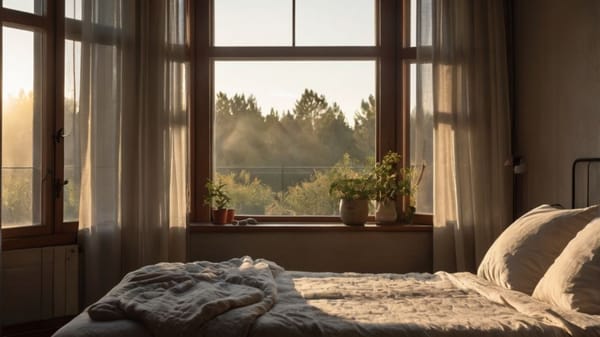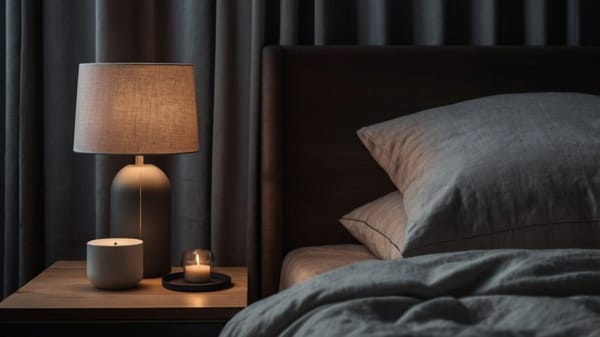The Hidden Signs of Sleep Apnea You Might Be Ignoring
Missing energy despite smart sleep habits? Discover how hidden sleep apnea signs could be draining you—and how to fix it for sharper days.

Have you ever wondered if you're doing everything right for better sleep—but still waking up drained? You might be missing a hidden factor that no amount of earlier bedtimes or fancy gadgets can fix: your breathing.
Sleep apnea often flies under the radar, quietly wrecking your energy, focus, and recovery. If you want sharper thinking, stronger workouts, and real restoration, it's time to look deeper than just hours on the clock.
Sleep Apnea Isn’t Always Obvious
Most people picture sleep apnea as a loud, gasping, snore-ridden disaster. Truth is, many cases are much quieter and way more insidious. You might not snore at all. You might not wake up fully during breathing disruptions. But your body knows.
Each time your airway narrows or collapses, oxygen drops and your brain panics—yanking you out of deep sleep to reopen the airway, often without your conscious awareness. These micro-arousals can happen hundreds of times a night.
On the surface? It just looks like a rough morning, sluggish afternoons, or irritability you chalk up to “being busy.”
Underneath? Your brain, muscles, metabolism, and hormones are operating on a low-grade emergency setting, night after night.
A massive meta-analysis from the journal Sleep confirms it: even untreated mild sleep apnea can impair memory, increase inflammation, and weaken cardiovascular resilience—all before more obvious symptoms appear.

Sneaky Daytime Signs You’re Missing
It’s not about how loud you sleep—it’s about how you feel when you're awake. Your body is constantly dropping hints when sleep apnea is in play. Here’s what often gets brushed off or misattributed:
- You’re tired, but not sleepy. You don’t feel the same drowsy pull as you would with sleep deprivation. Instead, you feel wired, foggy, and restless all day.
- Your workouts plateau—or regress. Strength, endurance, recovery, and even coordination quietly erode when your cells don’t get enough nighttime oxygen.
- Moods get sharper, darker, or more volatile. Cortisol stays elevated when apnea-related oxygen dips disrupt the balance of neurotransmitters like serotonin and dopamine.
- Weight loss stalls. Hormones like ghrelin and leptin, which regulate hunger and satiety, get thrown off after nights of fragmented, low-oxygen sleep.
- You get sick more often. Chronic low-grade stress from untreated apnea dampens immune function, even if your diet and training are otherwise dialed in.
In short: if you’re making smart moves and still feel like you’re running on 60%, your breathing at night might be stealing the other 40%.
Why Airway Health is the New Sleep Frontier
Optimizing sleep isn't just about when you go to bed. It's about whether your body can actually use that time to repair, refresh, and reboot. Oxygen is non-negotiable in this process.
During uninterrupted sleep, your body cycles through phases like deep (slow-wave) sleep and REM (dreaming) sleep. Each stage plays a critical role—muscle repair, memory consolidation, emotional regulation, metabolic recalibration.
But every time your brain senses a drop in oxygen, it aborts whatever stage you're in to prioritize survival. Over time, this “sleep fragmentation” sabotages the deep architecture you need for real restoration.
Research from Harvard Medical School’s Division of Sleep Medicine shows that even partial airway obstruction—without full breathing stoppages—can spike nighttime cortisol, alter heart rhythms, and reduce REM sleep by more than 30%.
You don’t need a full-blown medical crisis to suffer real performance costs.
In a world obsessed with productivity hacks and biohacks, airway health remains one of the most overlooked levers for unlocking better brainpower, mood resilience, and physical recovery.
How to Recognize Apnea Patterns Without a Sleep Lab
You don’t need to be hooked up to wires in a clinical setting to spot the early warning signs of compromised breathing.
Use your mornings as a litmus test. Are you consistently waking up with headaches, dry mouth, or feeling more exhausted than when you went to bed? These are classic hints your body fought for oxygen all night.
Track sleep metrics intelligently. Smart rings, watches, and sleep mats now offer rough data on sleep stages, heart rate variability (HRV), respiratory rate, and nighttime awakenings.
Look for signs like elevated resting heart rate, frequent “wake events,” or low REM percentages. None of these are diagnoses—but they can be red flags.
Check for hidden behaviors. If you’re grinding your teeth (bruxism), snoring lightly, shifting positions constantly, or waking up gasping for air even occasionally, it’s worth a closer look.
Studies show bruxism is often a subconscious attempt to reopen a blocked airway.
Listen to your body’s broader rhythms. If you’re more irritable, gaining stubborn fat, or catching every cold that comes around despite a clean lifestyle, compromised sleep-breathing could be the missing piece.
How to Start Fixing It (Without Turning Your Life Upside Down)
Spotting apnea early gives you a massive advantage. You can make meaningful upgrades now without waiting for a full crash-and-burn.
Adjust your sleep posture. Side sleeping drastically reduces airway collapses compared to back sleeping. A body pillow or simple pillow barricades can gently train you to stay on your side through the night.
Rebuild your bedroom. Clear allergens, lower bedroom temps to 65–68°F, and elevate your head slightly (4–6 inches) if needed. These minor tweaks reduce airway irritation and make breathing smoother.
Strengthen your airway muscles. Specific oropharyngeal exercises (like tongue presses, exaggerated vowel sounds, and soft palate lifts) can tighten lax tissues that cause airway collapse.
Brazilian researchers found that patients doing daily mouth exercises saw their apnea severity drop by 39%.
Manage alcohol, meals, and hydration strategically. Avoid heavy meals and alcohol within 2–3 hours of bedtime, both of which relax throat muscles and crowd the airway.
Stay hydrated during the day so your airway tissues don't dry out at night.
Take a proactive approach with testing. Modern at-home sleep tests are low-hassle, affordable, and highly accurate for detecting apnea. If early signs keep popping up, don’t guess—test. Better data leads to better decisions.
Final Thoughts: Breathe Deeper, Sleep Smarter, Live Sharper
Sleep apnea doesn’t have to be dramatic to destroy your edge. The hidden signs—low energy, stubborn weight, stalled recovery, foggy moods—are your body whispering for help long before it starts screaming.
Your best days are still in front of you. Getting serious about your sleep-breathing now means faster progress, easier focus, stronger workouts, sharper thinking—all without needing to grind harder.
Start tonight. Clear your space. Check your posture. Listen to the signals your body’s been sending. Smart sleep isn’t about doing more; it’s about unlocking what’s already inside you. Breathe better. Sleep deeper. Rise stronger.




